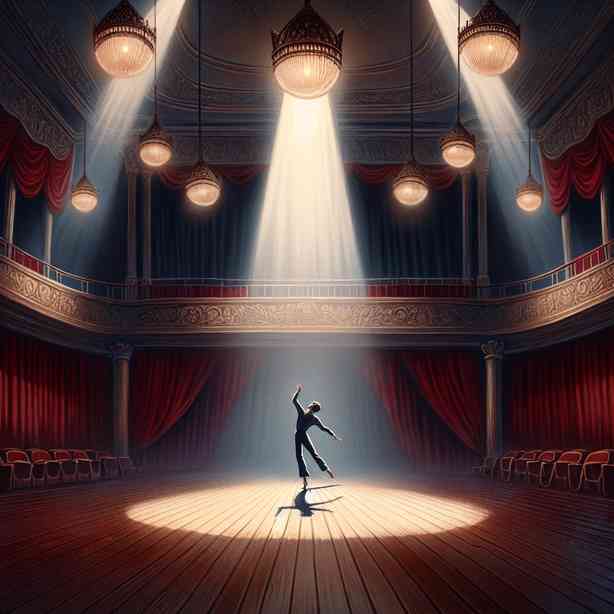
When you consider the essence of dancing for an empty room, you might find it both a poignant and powerful metaphor for self-expression and artistic dedication. In a world often driven by the need for validation, performing for an audience that is not physically present challenges us to think about our motivations and the intrinsic value of creativity.
When you dance—whether literally or figuratively—it is an act of vulnerability. You are opening up a part of yourself to the world, sharing emotions and perspectives that are uniquely yours. This act becomes even more profound when you realize that your only audience is the echoes of your movements and feelings reverberating in the space around you. The emptiness of the room may symbolize loneliness, but it can also represent freedom; freedom from judgment, expectation, and the constraints that often accompany performance.
Engaging in this self-directed dance, you may tap into an incredible reservoir of creativity. No longer are you confined by the fear of external opinions, which can sometimes hinder authentic self-expression. Instead, you become the sole creator of the narrative, weaving your own story through each step, every twirl, and all the moments of stillness in between who you are and what you wish to communicate. This act of creation formless in emptiness can be liberating.
Furthermore, when you dance for an empty room, you might begin to explore deeper sentiments and emotions that you might not have otherwise confronted. In solitude, there’s a unique opportunity to engage with your inner dialogue. You confront your fears, aspirations, joys, and sorrows without the added pressure of an audience. Think about how much of our lives we spend seeking out affirmation from others. Yet, in this moment where your only audience is the silence enveloping you, you can let go of the compulsion for validation and instead focus on the power of your own expressions.
This sense of introspection can lead to profound personal growth. As you dance, you may find yourself accessing parts of your identity and experiences that have been silenced or overlooked. The rhythm of your heart can guide your movements, allowing for a sincere and authentic expression of who you are. Perhaps you are dancing through memories, perhaps you are embodying your hopes for the future, or perhaps you are simply moving in response to the sensations of the present moment.
Moreover, embracing the notion of creating art for yourself can transcend the realm of dance and reach into all forms of creative outlets. Whether you’re writing, painting, or engaging in any other artistic endeavor, the empty room can serve as a canvas for your thoughts and feelings. It is a space where you can explore unfiltered creativity, embracing mistakes as part of the process rather than obstacles. By allowing yourself the grace to create without judgment, you may discover unexpected insights and personal revelations that can enrich your overall experience of life.
In this way, performing in an empty room can also serve as a metaphor for the journey of self-acceptance. Learning to be comfortable in one’s own skin is no small feat, and it often requires us to confront our insecurities directly. Dancing for an empty room challenges you to accept your own vulnerability and imperfections, fostering a sense of resilience and self-love. As you move to your own rhythm, embracing the fullness of who you are, you might realize that the dance itself becomes a joyous celebration of your existence.
The practice of expressing oneself in solitude can introduce a meditative quality to your experience. Whether you’re dancing, painting, writing, or engaging in any form of creative expression, the act can become a form of mindfulness. You start to become present in your body and the sensations associated with movement and creativity. The more you engage in this practice, the more you may feel grounded and connected to your own essence.
Additionally, consider the way in which such practices might influence your interactions with others. When you cultivate a relationship with your own creativity and self-expression, you become more attuned to the world around you. You may find yourself more empathetic and open to the experiences of others. By nurturing your own emotional landscape, you are equipping yourself with the tools to connect meaningfully with friends, loved ones, and even strangers.
As you continue to dance, write, or create in your empty room, you will likely discover that over time, these acts become a form of dialogue—both with yourself and the world. You begin to notice themes that emerge in your movement or your words. Recognizing your own patterns and stories becomes a way to understand your place in the world, opening doors to greater self-awareness.
Ultimately, the act of dancing for an empty room is not merely an exercise in creativity; it is an affirmation of your existence and a celebration of your humanity. The connections you cultivate within that solitude can serve as a foundation for genuine interactions in your external world. You learn to honor your voice, your stories, and the vibrant spirit that resides within you.
So, as you close this chapter of your exploration, remember that there is profound beauty in creating for the sake of creation itself. Dance freely, express authentically, and know that your journey—whether performed for one or many—is significant and worthy of celebration. Let the empty rooms become your safe haven, your studio of expression, where each movement resonates with the rhythm of your heart, echoing into the silence and returning to yourself with love and acceptance.
In this way, the empty room no longer feels lonely. Instead, it transforms into a sacred space of personal truth, embracing the joyous dance of life that unfolds through you. It is here that you understand the power of creation and the lifelong journey of discovering and sharing the essence of who you are.


